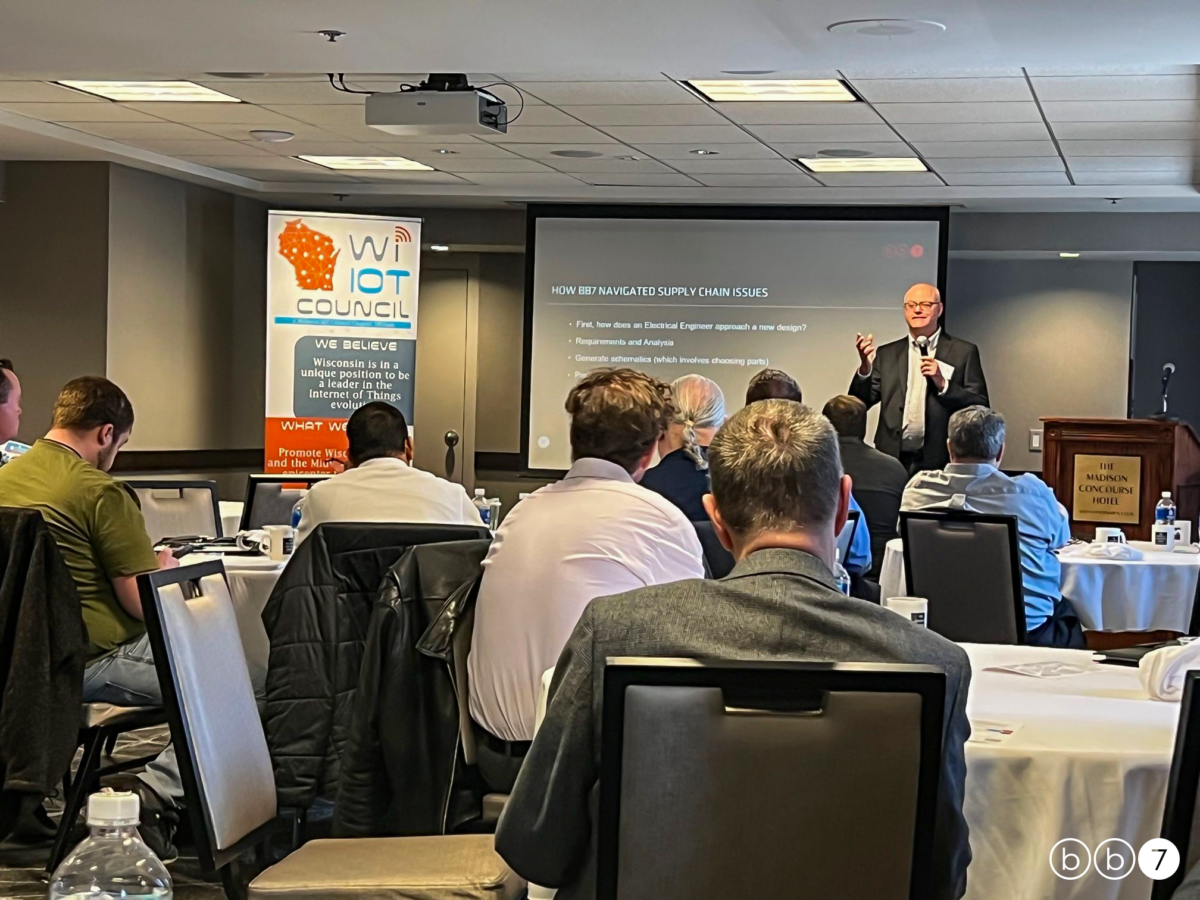
bb7 at Wisconsin IOT Council First Quarter Symposium

How bb7 navigated supply chain issues
On Wednesday, March 15th, bb7 was invited to attend and speak at Wisconsin Internet of Things First Quarter Symposium. Andy Levi, bb7’s Director of Embedded Systems Engineering, spoke about how bb7 navigated and continues to navigate through supply chain issues caused by the pandemic and other exacerbating factors.
What happened?
The pandemic hit the industry hard in 2020, as it did many others. As global industries reduced production, semiconductor demand decreased. Due to the decrease in demand, along with a shortage in materials and replacement equipment, manufacturers were forced to shutdown entirely.
Economic recovery
As more and more employee started working from home, and schools and universities started implementing online courses, the demand for electronics spiked. Both workers and students needed laptops, webcams, etc. in order to succeed in what they found to be their new normal.
exacerbating factors
Semiconductor brokers started to purchase parts in bulk; there was a lot of money to be made. bb7 experienced markups of 10–20x the normal price on many parts.
The fix
bb7 navigated through these challenges in a variety of ways. One key fix was to do the initial design work for a project using sample parts rather than purchasing the entire stock upfront. bb7 also worked with a number of clients to reduce the number of designs done, in turn having to buy less stock. In addition, we learned to keep our options open when choosing parts, and chose more available, lower risk parts for our projects.
The future
The pandemic taught us many lessons on how to complete projects for our clients in the most efficient way possible. It also created global recognition regarding the fragility of the semiconductor supply chain, and how important it is that it remains stable. The U.S. Government is actively working with the industry to improve the supply chain to ensure it is better prepared for any future complications that may arise.